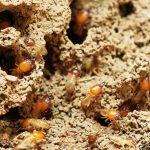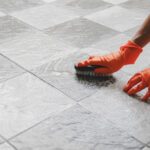Termites are relentless in their quest to find food. Though physically small, the insects have the power to destroy properties and possessions worth millions. Once they start, there is no telling the extent to which they can go. The best defense with termites is to go on the offense. Rather than waiting to see them on your walls, it is better to take preventative measures.
But first things first, what attracts termites to your home and how to prevent it?
Wet soil
Any dampness on the soil will have detrimental effects. Moisture tends to be a rich breeding ground for nutrients that attract termites. All it takes is one rainy season and poor drainage and before you know it, termites have eaten their way from the bottom to the room.
- Action required
To prevent the wetness of the soil around your house, ensure that your drainage system is functional and there is no stagnant water around the house.
Damp walls
Still on moisture, if you have blocked gutters and splashing roofs, you will most likely invite termites to your doorstep. Damp walls are a magnet to not only termites but also mold. With damp on walls, you will most likely have a rich nutrient zone that insects will race to feed on.
- Action required
Clear your gutters from anything that may block it. Use anti-splash materials to ensure water does not splash into your walls. It is also advisable to use high-quality downspouts.
Roof issues
Have you noticed termites on your ceiling or attic? It could be because of your roof. When you have low-hanging branches that touch your roof, they may act as a bridge between the tree and your house. Mud on your gutters will also attract termites to your roof and ceiling.
- Action required
Clear any and every branch that’s touching your roof. This rids any direct contact between the tree and your house.
Mulch
See that garden you try so hard to maintain? It could be attracting mulch to your house. How do you ask? In most cases, gardening requires mulching to help with soil water retention. This creates the perfect environment for termites to thrive.
- Action required
Since you still need to do some mulching for your garden, it is advisable to create a barrier between the mulch and the house. In other words, do the mulching further from the house.
Tree stumps
Trees make your property look beautiful on top of giving you fresh air. But once you get rid of the tree, it can be the source of termites infestation in your compound. Once the stump starts rotting, it becomes soft and damp which is all the invitation the termites want. Before you know it, the termites have flocked every inch of your property.
- Action required
Rather than cutting down a tree, go for tree removal which takes care of the stump. If this sounds expensive, you can paint the stamp or treat it with pesticides to discourage mites from attacking it.
Firewood piles
Firewood is a great source of warmth especially during cold winter nights. Most homeowners will collect and store firewood in their compound, and cover them to prevent them from getting wet. But wood is a strong magnet to termites and they will find a way to attack the firewood logs. You then get the termites inside your house when collecting the firewood or the storage or closer to your house and termites get access.
- Action required
Store the firewood on raised surfaces and ensure the whole storage area stays dry.
How to spot a termite infestation
If you are not careful, termites may clip into your house. Since termites are silent workers, you may take some time before you realize the damage they have caused. Here are some of the telltale signs that you have a termite infestation:
- Termite wings
When you find termite wings in your property, brace for a termite infestation. It is interesting that termites shed their old wings for new ones when they get a new colony. Hence, be on the lookout for wings.
- Mud tubes
Termites do well in dark and creepy places. But that does not mean that they will not travel in open areas. Far from it as they create mud tubes to emulate dark places. When you see mud tubes on your sidings or walls, know you have got a termite problem.
- Blistering
When termites feed on tour wood chippings, especially below the surface, you will notice blistering on your walls. When this happens, call in the experts or buy pesticides to deal with your problem.
- Termite frass or droppings
Termites usually leave behind a wall of droppings, usually brown in color. The frass, as they are known, resemble sawdust or wood particles because of the wood chippings the insects feed on. If you notice these droppings, you have a termite infestation.
- Damaged wood
When you inspect your house and find damaged wood or structure, the termites may have found refuge in your property and have been residing there for a while.








